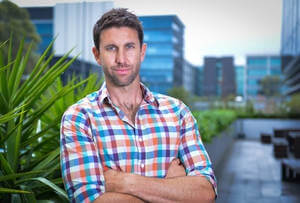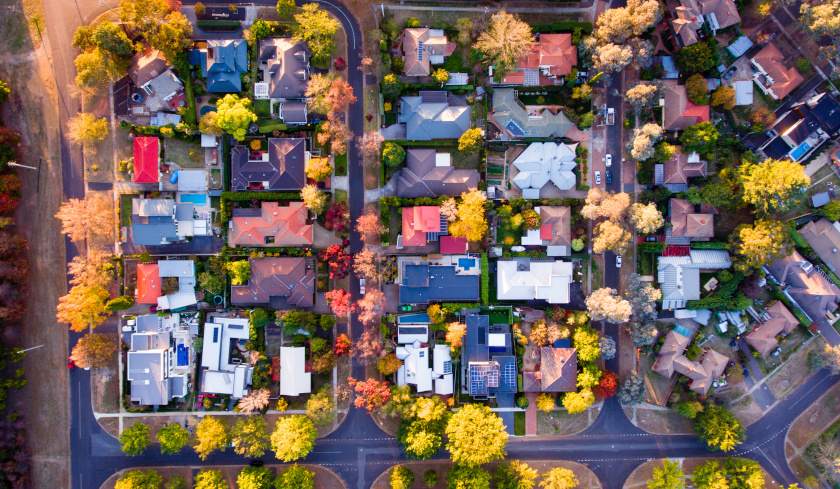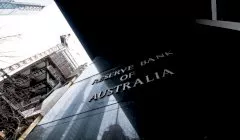Invest
Predicting Australia's property market
With the federal election decided and the negative gearing debate put to bed for another term, where will markets move over the next two to three years?
Predicting Australia's property market
With the federal election decided and the negative gearing debate put to bed for another term, where will markets move over the next two to three years?

At this stage, there are several factors affecting the big three east coast markets.
Melbourne: Melbourne is in a bit of a fluctuating period from the data we see. There is a large amount of supply both in approval and construction phases all the way from Docklands to Werribee. The next three to five years are going to be very suburb specific for growth. Pure Property Investment (PPI) is still looking for established property under the $400,000 market in the north and south-west within 25 kilometres of the city.
Sydney: Similar story, still a large undersupply issue in certain pockets of the greater metropolitan areas and the demand looks set to continue into the next decade. Affordability and wage growth are the major limiting factors we see in general. We do see some value in the established pockets of the middle ring (20 kilometres from the city), however cash flow is not attractive at this stage. We see more value coming to hand in the next three to five years.
Brisbane: Our data suggests Brisbane will continue to show a nice period of sustained growth into 2020. Its limiting factor in the past has been state government commitment to large-scale infrastructure projects. However, we are starting to see some stronger and more stable jobs figures in the pockets of Ipswich, Lower Logan/Beenleigh and Moreton Bay. We see, and have seen for the past 24 months, some excellent opportunities to pick up properties around the $300,000 mark in areas which are seeing large-scale gentrification and great yields.

Hobart: The east coast’s sleepy cousin is stirring a little and there are some good signs in the short- to medium-term for jobs growth. With the rise of the tourism dollar, specifically from China, there is a very tight vacancy rate and demand is building. I see a good couple of years with good cash flow opportunities up to the year 2020.
Adelaide: PPI is a bit bearish in the next two to three years, with some of the large-scale manufacturing plants closing over the short term. The announcement of the $50 billion submarine project will provide a great boost with an additional 3,000 or so high-paying jobs flowing from this. However, this project has a 15-year horizon and as such we don’t see the benefits coming in until around 2019 to 2022.
Perth: Well, it’s a bit of a tale of ‘if you can’t say anything nice, don’t say anything at all’. Perth has some very depressed markets which are getting more depressed by the day. The only saving grace for Perth property investors at this stage is the historically low interest rates. They are not showing any real sign of transitioning their economy from iron ore and gas to mainstream economic drivers. If the state government can’t drive jobs growth in the next one to two years before the interest rates start to rise, I do see a bloodbath in the short term as investors will not be able to hold their investments once interest rates start to rise. However, the savvy investor will most certainly keep an eye on this market and if we see a turnaround in the days on market, jobs growth and buyer sentiment, there will be some distinct bargains to be had.
Darwin: Similar to Perth, we see some challenges in jobs growth and economic diversification. If the new gas project gets off the ground, we may see some prolonged price stability. However, PPI is bearish on Darwin at this stage.
Canberra: The little engine that could, Canberra continues to deliver investors a solid and stable return. With the Q4 2015/2016 data showing Canberra has delivered the country’s best growth, at over 3 per cent, for the quarter, a stable government and jobs market will continue to provide a safe return for investors. Cash flow is a little slim and entry point is a bit higher, around the $450,000 to $550,000 mark.
What’s the cash flow situation in general for each state?
Melbourne: Supply on the market and coming to the market is looking very high, and we believe this is going to depress yields for the next three to five years.
Sydney: The more tightly held (non-developable) areas have seen a slightly higher yield, albeit a small one. Sydney is expensive and that is still keeping many Generation Ys in the rental market as they can’t afford to enter the home buyers/investor market. However, the data suggests yields are around 3 to 4 per cent depending on the area, and we don’t see that changing. Creative investors are always looking to add cash flow such as granny flats, share accommodation, developing blocks etc).
Brisbane: One of the better cash flow markets across the country with strong yields and good demand. Stick to the growing areas of Ipswich, Beenleigh/Logan and Moreton Bay where we are buying 6 per cent plus yielding (sub 15-year-old) properties in growth areas. Be sure to understand the vacancy rates and unemployment situations as they can prove to be very important in these markets.
Hobart: Very tight supply (sub 2 per cent) which is providing great return for cash flow investors. Stick to the middle/outer suburbs (10 to 25 kilometres from city). We are picking up properties which are providing 7 to 8 per cent yields regularly.
Adelaide: Stick to the middle and inner rings. Cash flow is okay in Adelaide at the moment and we see that continuing into the next two to three years. Though 5 per cent gross yields are readily achievable, I would steer clear of the outer rings until we see the true fallout of the manufacturing sector.
Perth and Darwin: Cash flow is okay, but the big caveat is the demand factor. On paper, the properties are achieving 5 per cent gross but the vacancy rates are increasing by the day and this will be a big issue in the long run.
Canberra: With low vacancy rates within the 15 kilometre ring of our capital we see an even keel return of around the 4 to 4.5 per cent gross mark. This is not lighting anyone’s socks on fire, however it’s pretty consistent and looks to remain that way.
Which regions have the most potential for capital growth under $450,000? Which regions have limited potential?
Brisbane: Still our number one pick at the moment, specifically out towards Ipswich, Lower Logan suburbs and Moreton Bay. Price point is still extremely affordable, yields are excellent and demand/jobs creation is building.
Perth and Darwin: In the short term, we don’t see any data that is going to help its situation. Perth has seen a doubling of the properties on the market between 2014 and 2016 and they have a long way to go to show signs of growth. It is relatively cheap buying in Perth at the moment, but you need to pick the start of the next growth cycle and not just the bottom to ensure you are achieving capital growth.
That’s our around the grounds for financial year 2016/2017. As you can see, it’s not a ‘one market’ approach and where you invest will most certainly dictate your returns in the lucky county.
Paul Glossop is the founder and director of Pure Property Investment.

Property
Retirement communities: a pivotal element in meeting Australia's housing targets
The Retirement Living Council (RLC) has recommended that retirement communities should be considered a vital part in the Australian Government's initiative to fulfill the Housing Australia Future Fund ...Read more

Property
Australians adjust financial strategies amid changing property market dynamics
The 2023 calendar year saw Australian borrowers acquiring a total of $300.9 billion in new loans for property purchases, marking a 12.7% decrease from the previous year. Read more

Property
Split home loans unlocking doors for Aussie buyers
Australians are teaming up to dive into the real estate market and seize the advantages of home ownership, with the trend of split home loans surging as family and friends unite to buy properties ...Read more

Property
Real estate investment: Spotting high-growth potentials
Investing in real estate has long been a favoured approach for Australians looking to grow their wealth. Read more

Property
Granny flats become Aussie families' cost-effective solution to soaring living costs
As the cost of living skyrockets, a forward-thinking trend is sweeping across Australia – granny flats are becoming a favoured living arrangement for older Aussies seeking comfort and proximity to ...Read more

Property
Homebuyers grapple with extended savings period amid affordability crisis
Gone are the days when an Australian dream home seemed just within reach. The path to homeownership in Australia has extended by at least two arduous years, as revealed by the latest insights from ...Read more

Property
Hybrid development unlocks new potential for NDIS housing in metro hotspots
In a ground-breaking strategy aimed at addressing the stark imbalance between the location of Specialist Disability Accommodation (SDA) developments and the actual areas of demand, Aligned Disability ...Read more

Property
Property prices boosted by housing policies: RBA
The central bank has outlined the “pervasive” impact that policy has on property. Read more

Property
Retirement communities: a pivotal element in meeting Australia's housing targets
The Retirement Living Council (RLC) has recommended that retirement communities should be considered a vital part in the Australian Government's initiative to fulfill the Housing Australia Future Fund ...Read more

Property
Australians adjust financial strategies amid changing property market dynamics
The 2023 calendar year saw Australian borrowers acquiring a total of $300.9 billion in new loans for property purchases, marking a 12.7% decrease from the previous year. Read more

Property
Split home loans unlocking doors for Aussie buyers
Australians are teaming up to dive into the real estate market and seize the advantages of home ownership, with the trend of split home loans surging as family and friends unite to buy properties ...Read more

Property
Real estate investment: Spotting high-growth potentials
Investing in real estate has long been a favoured approach for Australians looking to grow their wealth. Read more

Property
Granny flats become Aussie families' cost-effective solution to soaring living costs
As the cost of living skyrockets, a forward-thinking trend is sweeping across Australia – granny flats are becoming a favoured living arrangement for older Aussies seeking comfort and proximity to ...Read more

Property
Homebuyers grapple with extended savings period amid affordability crisis
Gone are the days when an Australian dream home seemed just within reach. The path to homeownership in Australia has extended by at least two arduous years, as revealed by the latest insights from ...Read more

Property
Hybrid development unlocks new potential for NDIS housing in metro hotspots
In a ground-breaking strategy aimed at addressing the stark imbalance between the location of Specialist Disability Accommodation (SDA) developments and the actual areas of demand, Aligned Disability ...Read more

Property
Property prices boosted by housing policies: RBA
The central bank has outlined the “pervasive” impact that policy has on property. Read more






